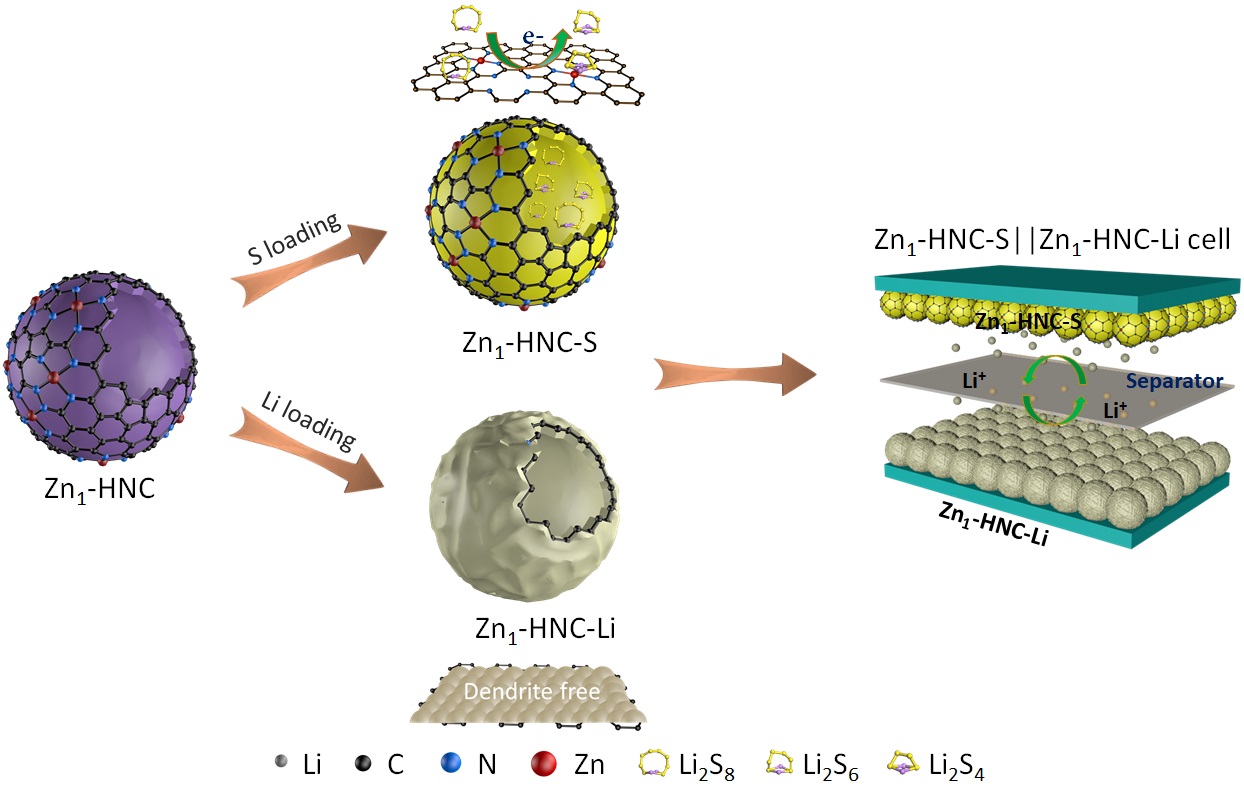H.D. Shi, X.M. Ren, J.M. Lu, C. Dong, J. Liu, Q.H. Yang,* J. Chen, Z.-S. Wu*
Advanced Energy Materials, 2020, 10, 2002271.
DOI: 10.1002/aenm.202002271 [PDF]

Lithium sulfur (Li-S) battery is a preferential option as the next-generation energy storage technologies, but the lithium polysulfide shuttling, sluggish redox kinetics and uncontrollable lithium dendrite hamper its commercial viability. Herein, a well-dispersedsingle atom Zn-decorated hollow carbon sphere (Zn1-HNC) is developed as dual-functional nanoreactors for polysulfides-suppressed sulfur cathode (Zn1-HNC-S) and dendrite-free lithium anode (Zn1-HNC-Li)simultaneouslyfor high-capacity, high-rate and long-cycling Li-S batteries with fast redox kinetics. Benefiting from its excellent electronic conductivity, high surface area (370 m2g-1), highly-effective active sites and protective carbon shell, the resultant nanoreactor possesses strong physical confinement, chemical anchoring and exceptional electrocatalysis for polysulfides. Meanwhile, the nanoreactor with excellent lithiophilic ability realizes uniform and dendrite-free lithium deposition. Integrating all these advantages, theassembled full battery (Zn1-HNC-S || Zn1-HNC-Li) delivers remarkable electrochemical properties including long cycle stability with ultralow capacity fading rate 0.015% per cycle over 700 cycles and superb rate performance of 989 mAh g-1at 10 C. Moreover, a high areal capacity of 8.7 mAh cm-2with high S loading of 7.8 mg cm-2at low E/S ratio (6.4μl mg-1) is achieved.This work providessignificant insight of structure and surface catalytic chemistry regulation for promoting the actual application of Li-S batteries.